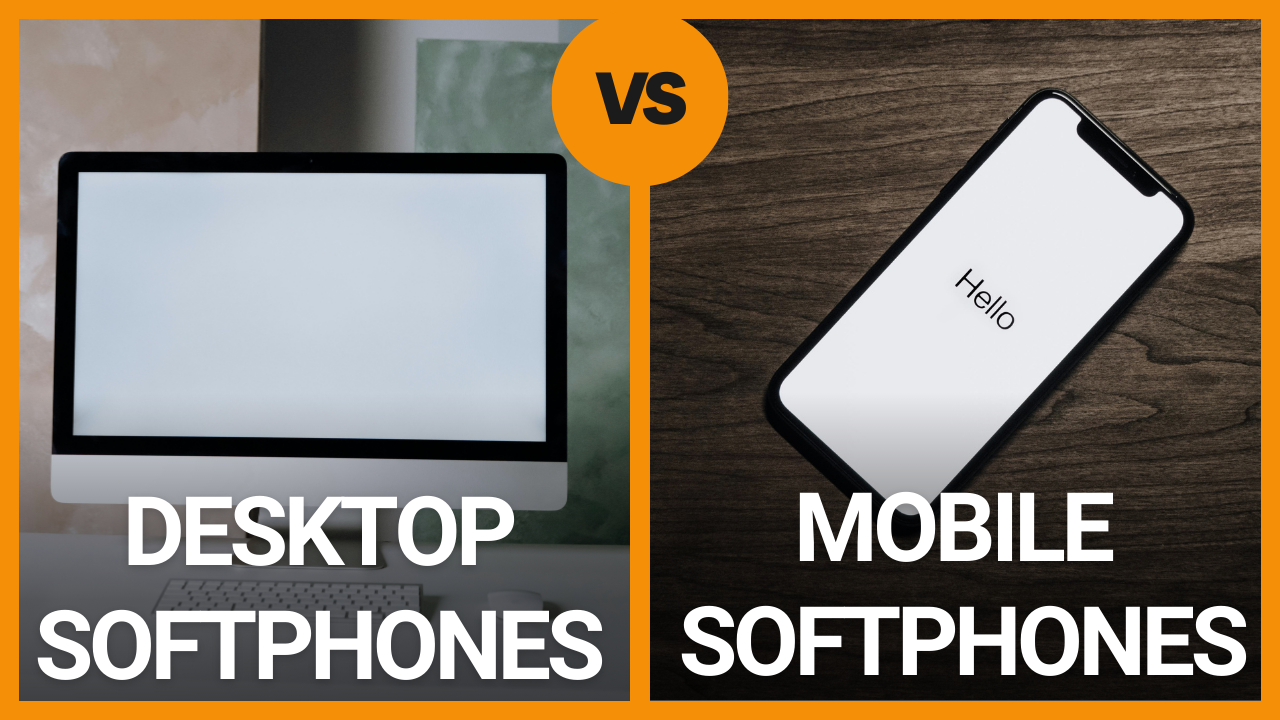
Hello, I’m Sam Rozenfeld, CEO of DLS. We have been in the VoIP industry since 2004, and over the years, we have frequently been asked why desktop softphones behave differently from mobile softphones. In this article, I will clarify these distinctions in plain language, with a touch of light humor along the way.
What Are Softphones?
A softphone is a software application that enables you to make and receive phone calls using VoIP (Voice over Internet Protocol). Instead of relying on a physical handset, your device—be it a computer, tablet, or smartphone—performs all the telephone functions. These softphones typically use SIP (Session Initiation Protocol) to manage calls and signaling.
Desktop Softphones: Always Connected.
- Consistent Power Supply
Desktop computers generally remain plugged in and powered throughout the workday. As a result, they can maintain a continuous SIP registration with the PBX (Private Branch Exchange). Since battery life is not a concern, they can exchange signaling messages without interruption.
- Stable Network Environment
Most desktops connect over a reliable office LAN or a steady Wi-Fi network, minimizing unexpected changes in IP addresses. This stability allows for seamless two-way communication with the PBX, ensuring calls are delivered promptly and consistently.
- Continuous Registration
Since a desktop does not need to conserve power, it can persistently inform the PBX of its availability. This constant presence typically results in near-instant call delivery. Think of it as a dedicated receptionist, always ready to greet visitors.
Mobile Softphones: Balancing Connectivity and Battery Life
- Battery Conservation
Smartphones and tablets rely on battery power. If a mobile softphone attempted to stay registered nonstop (as a desktop does), the device’s battery would deplete rapidly. Mobile operating systems are designed to optimize battery usage, often putting apps into sleep or low-power modes to preserve charge.
- Changing Networks
Unlike a desktop, a smartphone might switch between home Wi-Fi, office Wi-Fi, cellular data, and public hotspots throughout the day. These changing networks mean constant shifts in IP addresses, complicating the ability to maintain a direct SIP connection without interruption.
- Proxy Registration
To circumvent these challenges, mobile softphones typically employ a proxy or SIP server that remains continuously registered on their behalf. This proxy “pretends” to be the mobile phone in the eyes of the PBX. When a call arrives, the PBX reaches the proxy, and the proxy uses push notifications to wake the softphone on the mobile device. This approach preserves battery life and ensures the user still receives calls in a timely manner.
Why Does This Matter?
1. Reliability of Inbound Calls
• Desktop: A desktop softphone is almost always available, making inbound calls highly reliable.
• Mobile: There may be a slight delay due to the push notification required to wake the app, but battery life is preserved.
2. User Experience
• Desktop: Calls come through without fail, as the machine remains powered and connected.
• Mobile: The experience might differ slightly, given the phone’s need to optimize power and manage multiple network transitions.
3. Practical Deployment Considerations
• Desktop: Ideal for office-based staff who need constant availability.
• Mobile: Suited for on-the-go professionals who prioritize flexibility and battery conservation.
4. Cost and Infrastructure
• Desktop: Typically requires a stable office environment but can reduce the need for physical desk phones.
• Mobile: Convenient for a dispersed workforce but may require configuring proxy or cloud services to enable push notifications.
Professional Insights from DLS
At DLS, we have been designing and implementing VoIP solutions since 2004. Our experience has shown that both desktop and mobile softphones have distinct advantages:
• Desktop Softphones are perfect for users who remain at their desks and require uninterrupted service.
• Mobile Softphones are invaluable for employees on the move, where power consumption and network changes must be managed carefully.
That said, successful deployment often hinges on selecting the right tools and configuring them correctly. For mobile softphones, leveraging push notification services and a reliable proxy is crucial for ensuring you can both receive and make calls without draining your battery by midday.
In Conclusion
Understanding the differences between desktop and mobile softphones helps you make informed decisions about your communication strategy. At DLS, we aim to empower businesses and individuals with the flexibility to communicate effectively—whether they are sitting at a desk or traveling across town.
If you have any questions or need guidance on deploying VoIP solutions, feel free to reach out. We are here to help you strike the right balance between constant connectivity and practical power management.
Sam Rozenfeld
CEO, DLS – Delivering VoIP Solutions Since 2004